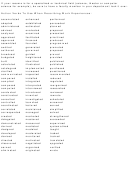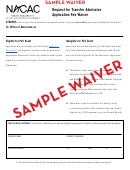Writing Resumes For Scholarship/admission Applications
ADVERTISEMENT
Writing Resumes for Scholarship/Admission Applications
This information will get you started.
Produce a draft, and then get an advisor's help.
What is a Resume?
A resume is a data sheet that markets your credentials. It outlines your skills and
qualifications and prompts potential employers to talk to you further about the
opportunities they offer. A resume gets you in the door, but it doesn’t get you the job.
You’ll get a job offer as a result of successful interviews.
Create a Master List
The first step is to recall and list every experience you can think of including
volunteer/community service, internships, paid jobs, and major research projects. You
should also list campus activities, student organizations, and all of your educational
experiences. Don’t worry about the format yet. This master list will provide you with all
the information you need to create your resume and cover letter and prepare for
interviewing.
Elaborate On Your List
Next, write descriptions of the items on your list. Include information about your specific
responsibilities, skills used, and outcomes you obtained. Use action verbs in your
descriptions
(see the Action Verb list
below). Remember to tailor the descriptions to
the types of jobs and employers you’re targeting. Think about the skills you used in each
of your positions that will be of interest to potential employers. You’re trying to convince
an employer that your skills transfer to the type of position for which you’re applying.
Organize Your Resume
After you have written descriptions for your positions, you’ll need to decide how to
organize your experiences, and what to include in the resume. You do not need to
include every experience in your list. Be strategic. Focus on those experiences that will
be of most interest to your prospective employer.
There are a few sections that are common to most resumes:
CONTACT INFORMATION
It’s a good idea to include both your current school address and a
permanent address. Be sure that your phone numbers are correct, and
always include an email address. You only need to list one email address,
but be sure you check it frequently. If you use an email address other than
your Oberlin one, be sure to use a professional sounding address. Do not
include your social security number or date of birth.
OBJECTIVE
This is optional. If you choose to include one, make it a concise declaration
of the position you seek in a specified area, department, or industry i.e. a
summer internship in a public relations firm. You will elaborate on this more
fully in your cover letter, so if you can better use the space on your resume
ADVERTISEMENT
0 votes
Related Articles
Related forms
Related Categories
Parent category: Business
 1
1 2
2 3
3 4
4 5
5 6
6








